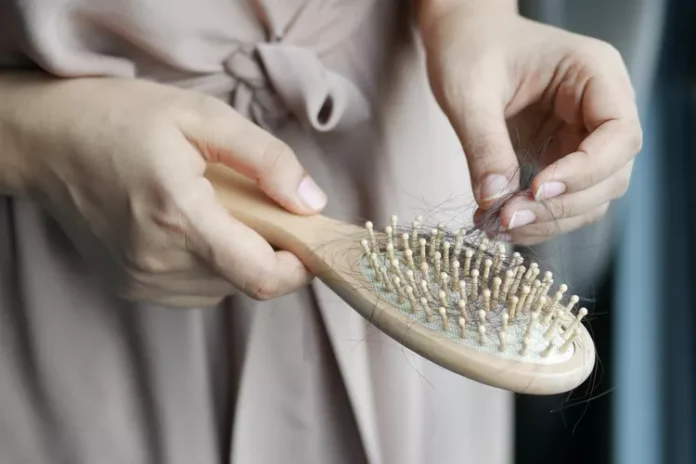How Much Hair Is Normal to Lose Per Day: Key Facts and Expert Advice
It’s normal to wonder about hair loss, especially when you start noticing extra strands in your brush, shower, or hands. But how much hair loss is actually normal? The good news is that shedding hair is a routine part of the hair growth cycle.
We all lose hair every day, but what’s considered excessive? Let’s dive into the specifics and explore how much hair you should expect to lose on a daily basis, when it might become a concern, and what you can do about it.

Understanding Normal Hair Shedding
Daily hair shedding is part of your hair’s natural life cycle, which includes growing, resting, and eventually falling out. On average, it’s perfectly normal to lose between 50 and 100 hairs a day, depending on the thickness and length of your hair.
While that might sound like a lot, the amount of hair on your head (about 100,000 strands) makes it barely noticeable. However, there’s more to this number than meets the eye.
Your shedding rate can vary based on factors such as genetics, hair texture, how often you shampoo, and your overall health.
It’s also important to pay attention to how much you shed in different circumstances—like brushing, washing, or running your fingers through your hair—to determine what is normal for you.
Shedding in Your Brush
One of the most common places people notice hair shedding is in their brush. According to experts, the more frequently you brush your hair, the fewer hairs you’ll see fall out at each brushing session.
If you brush daily, you may see fewer strands as they are being lost more evenly over time. If you brush less often, say once every few days, expect to see more hair in your brush as the strands accumulate.
Shedding in the Shower
Hair loss in the shower is another common concern. When you shampoo, it’s normal for 75 to 80% of the daily hair you shed to come out during washing.
This is especially true for those who wash their hair less frequently, leading to a buildup of strands that fall out during the next wash.
For those with shorter or thinner hair, less shedding might occur, but the key takeaway is to track what is normal for you and your personal washing habits.
Shedding in Your Hands
Another place people notice shedding is when running their hands through their hair. You might see five to eight strands at a time, which is considered normal.
Factors like hair texture, the products you use, and stress levels can influence this, but remember: hair loss shouldn’t change rapidly.
It’s crucial to differentiate between gently running your fingers through your hair versus actively pulling strands, which can give a false impression of hair loss severity.

When Should You Worry About Hair Loss?
Shedding more than the average amount of hair is common, especially during periods of high stress, illness, or after significant physical changes like pregnancy or weight loss.
However, abnormal hair loss may be indicated if you start to notice bald patches, excessive clumps of hair falling out, or scalp irritation. These are all signs that it might be time to consult a doctor.
Hair loss can also affect other areas of the body, such as the eyebrows and eyelashes, so any sudden changes in these areas should be addressed.
Key Causes of Excessive Hair Loss
- Genetics: A common cause of hair loss is hereditary. This type of hair loss typically occurs gradually and in predictable patterns, such as a receding hairline or thinning spots.
- Stress and Illness: Major life events or illness can trigger temporary hair loss, which usually resolves as your body recovers.
- Hair Styles: Tight hairstyles that cause tension, such as ponytails or braids, can lead to traction alopecia, a condition where hair is pulled out by the roots.
- Nutritional Deficiencies: A lack of essential nutrients, particularly protein and iron, can result in hair loss.
- Medical Conditions: Autoimmune diseases, thyroid issues, and other health problems can disrupt the hair growth cycle.

Steps to Take for Excessive Hair Loss
If you’re concerned that your hair loss goes beyond the normal range, it’s always best to consult a dermatologist.
A specialist can help determine whether your shedding is within the normal range or if there’s an underlying cause that needs addressing.
Some clear indicators that you should see a doctor include bald spots, losing large clumps of hair, and experiencing scalp discomfort like itching or irritation.
Treating Hair Loss
Treatment for hair loss depends on the cause. Options range from dietary changes and supplements to address nutritional deficiencies, to medical treatments like minoxidil, which can help stimulate hair regrowth.
It’s essential to consult with a healthcare professional before starting any treatment plan to ensure that you are addressing the root cause of your hair loss.
FAQs about Hair Loss
What is the average amount of hair to lose per day?
On average, most people lose between 50 and 100 hairs per day, depending on their hair type and overall health.
Is it normal to lose more hair in the shower?
Yes, it’s normal to lose the majority of your daily shed in the shower. This is especially common if you don’t wash your hair every day.
When should I be concerned about hair loss?
If you notice bald patches, excessive clumping, or scalp irritation, it’s time to consult with a doctor to assess the underlying cause.
Can stress cause hair loss?
Yes, stress is a major contributor to hair loss, especially during or after stressful life events or illnesses.
How can I treat hair loss?
Treatments for hair loss include improving your diet, reducing stress, and potentially using products like minoxidil. Consult a doctor for personalized advice.
Reference Links


